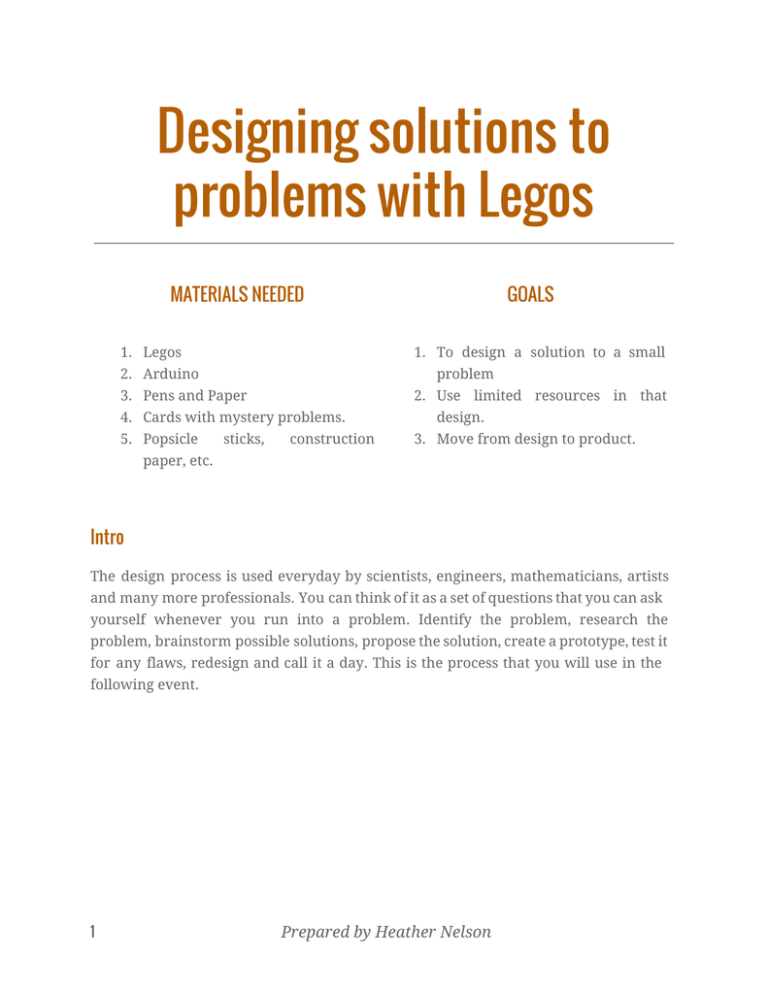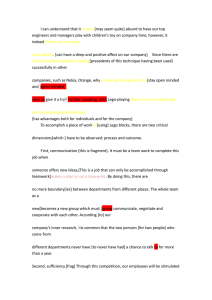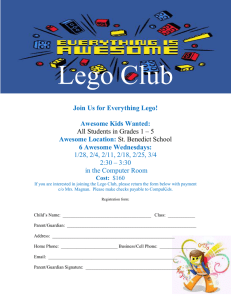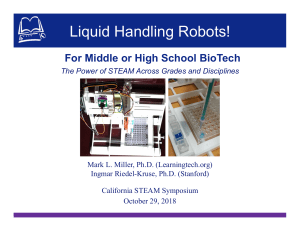Designing solutions to problems with Legos
advertisement

Designing solutions to problems with Legos MATERIALS NEEDED 1. Legos 1. To design a solution to a small 2. Arduino problem 3. Pens and Paper 2. Use limited resources in that 4. Cards with mystery problems. 5. Popsicle GOALS sticks, construction design. 3. Move from design to product. paper, etc. Intro The design process is used everyday by scientists, engineers, mathematicians, artists and many more professionals. You can think of it as a set of questions that you can ask yourself whenever you run into a problem. Identify the problem, research the problem, brainstorm possible solutions, propose the solution, create a prototype, test it for any flaws, redesign and call it a day. This is the process that you will use in the following event. 1 Prepared by Heather Nelson Overview In this event you will meet with a team of several students and be given a problem. You will then design a solution to the problem, and work on a prototype. You will have access to legos, motors, servos, arduinos, sensors, and scratch to complete the assignment. 2 Instructions 1. Meet with your group, and get a problem card. 2. Using the paper and pens brain storm multiple solutions to the problem. 3. What skills and materials are needed to solve the problem. 4. Write out a material list, and get the parts you need. 5. Divide up the tasks between each member based on their skills and experience. 6. Build a working prototype. 7. Present your solution and your prototype. Questions What are the advantages and disadvantages of splitting up the work? What method(s) did you use to brainstorm ideas? What was the biggest snag in your design? What would you do differently next time? Problems Make a lego soda dispenser. Make a lego walking robot. Make a 3 wheeled car. Make a lego mixer. Make a lego bridge that opens. Make lighting for your lego town. Make a crane. Make a responsive pet feeder. 3



